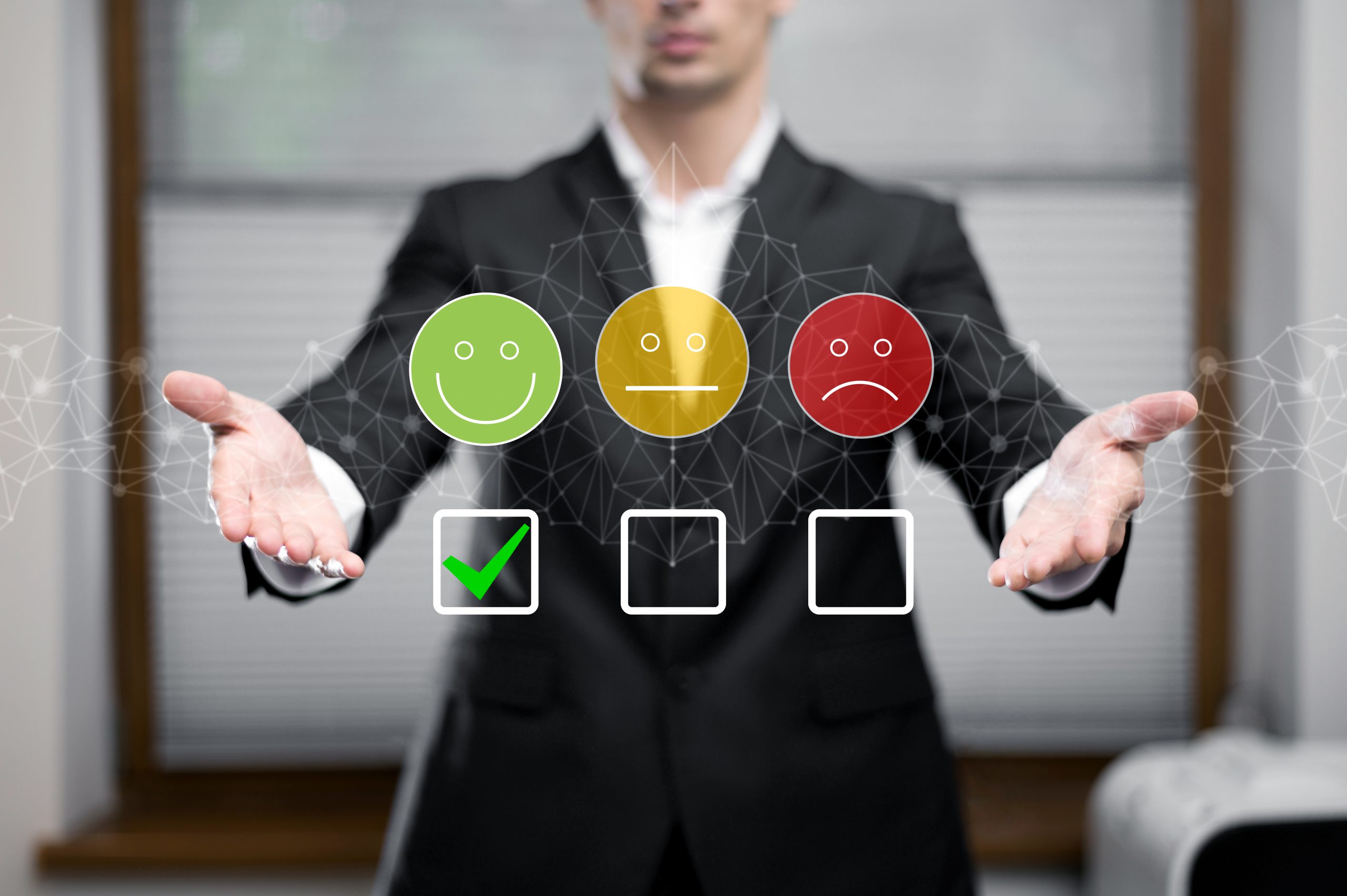
In a debt collection call center, the quality of calls is crucial for successful collection efforts. Properly evaluating this quality is key to identifying areas for improvement and ensuring effective service.
In this post, we will explore the main aspects to consider when evaluating call quality in a debt collection call center.
What is Call Center Quality?
Quality in a call center translates into measuring and tracking the excellence and effectiveness of customer interactions. This activity provides vital data about customer service standards and helps quickly identify potential issues and deficiencies before they escalate.
However, it is crucial to consider: what characteristics define a successful call? While a high first-call resolution rate is an indicator of quality, it is not the only criterion to consider. Other relevant qualitative aspects include a friendly tone of voice, a calm and reassuring demeanor, a strong relationship between agents and customers that promotes active interaction, effective questioning skills, the use of appropriate language without unnecessary technical jargon, outstanding active listening skills to understand customer needs, reduced wait times, and low call handling times.
Call center managers have the responsibility to evaluate the quality of customer interactions and agent performance. It is essential to regularly communicate performance expectations to agents, especially when managing multiple call center teams.
How to Evaluate Call Quality
Call center agents, being the primary point of contact with customers, play a crucial role in the customer experience, which is why their performance should be continuously monitored. They should have an ideal call service model to use as a guide. It is essential to evaluate incoming and outgoing calls, identify patterns of strengths and weaknesses in agent practices, and use these findings to define and adjust the ideal call scenario. These adjustments may include changes in the call script, agent tone or language, improving CRM software management to optimize workflow, and placing a greater focus on first-contact resolution. It is helpful to use examples of past successful calls for reviews and as part of agent training.
There are different methods and resources available to measure agent performance and, therefore, call quality in a call center. These include:
Call Recording and Analysis
Monitoring call quality in contact centers is vital to optimize processes and ensure a positive customer experience. It is a common practice in call centers to record and review phone interactions to assess agent performance and customer satisfaction.
Customer Satisfaction Surveys
Surveys play a fundamental role in evaluating the customer experience on each call. By soliciting their feedback, a precise understanding of the call center’s performance and how customers perceive the brand is obtained. These surveys provide valuable information about customer satisfaction, identifying areas for improvement and enabling actions to deliver exceptional service. They are an essential tool to ensure a satisfactory experience and strengthen customer relationships.
Key Performance Indicators (KPIs)
To address these challenges, it is vital to establish clear quality standards and define Key Performance Indicators (KPIs) that serve as reference points for the team. An efficient quality control team needs well-defined metrics and goals to evaluate agent performance and identify specific areas that need improvement. With these established standards and KPIs, effective performance evaluation and measures to enhance quality in the contact center are facilitated.
Challenges in Evaluating Call Quality
Assessing call quality can present certain obstacles, such as:
- Unrepresentative samples: Many centers face challenges in selecting a representative sample of interactions for evaluation. Manual and random call selection can be limited and biased, failing to provide a holistic view of agent performance.
- Defective transcriptions: Faulty transcriptions that contain partial words and fail to reflect natural speech make it difficult to understand the conversation as a whole and lack context. While keywords may be captured, they do not provide a clear picture of what is working well or poorly in the customer experience.
- Tone: Tone does not provide specific details or context; it merely indicates the emotional state at that moment without offering broader information about the situation. It is important to complement tone analysis with other tools and metrics to gain a more comprehensive understanding of the customer experience.
- False positives and negatives: These are results that can significantly impact outcomes by incorrectly detecting keywords.
How to drive continuous call quality improvement using AI
To overcome the challenges in evaluating call quality, it is crucial to utilize an automated voice analysis system that records and monitors all conversations. This provides a comprehensive and objective view of call quality, freeing agents and managers from tedious processes and ensuring data-driven decisions. Implementing AI-driven call analysis technology, such as Upbe, improves transcriptions by filling gaps in phonetic transcriptions and enables better understanding of issues in conversations. Additionally, leveraging context to generate valuable insights into customer emotional state and agent effectiveness is important. Using machine learning-based categories helps to group and analyze statements more accurately. These artificial intelligence solutions allow for more precise evaluation and provide valuable insights for business decision-making, as we will see below.
Success Case: Optimization of Customer Service and Debt Collection Processes for a Telecommunications Company
A telecommunications company approached us seeking assistance in optimizing key processes, including inbound and outbound customer service, debt collection, claims handling, customer ticket resolution, and incident management, all according to their quality standards. To carry out this task, we processed a total of 155,760 minutes of calls per month, representing 20% of all calls handled.
The results achieved were significant: we achieved a 3% decrease in detractors over a 6-month period. Additionally, we increased customer retention by 10%, improved the collection rate by 8%, and achieved a 31% reduction in official complaints in just 2 months. In the first month, we also reduced misrouted calls by 9%.
This success case highlights the effectiveness of optimizing and conducting detailed analysis of processes to achieve significant improvements in efficiency and effectiveness in customer service and debt collection in call centers. Evaluating the quality of interactions in these centers is crucial as it leads to more effective service and maximizes results. By implementing the procedures outlined in this guide, you can establish a robust evaluation process and continuously enhance the performance of your agents, thereby optimizing the outcomes of your call center. Remember, delivering quality customer experiences is an essential component of business success.
Are you ready to take your call center to the next level? Contact us today to start your journey towards optimization and success.

Quality in a call center is measured using a combination of quantitative and qualitative indicators, such as average response time, customer satisfaction, and problem-solving effectiveness. In addition, voice analysis technologies are used to record and analyze all calls, providing a comprehensive view of the quality of interactions. This includes high-quality transcription, analysis of tone and context of conversations, and monitoring of agent performance through call auditing, identifying areas for improvement and best practices to optimize agent effectiveness. call center.
In a call center, the evaluation of a telephone call covers several factors, such as the clarity of the agent’s communication, his adherence to the script, the quality of the transcriptions obtained through voice recognition technologies, the tone and behavior of the agent. , their ability to solve problems and customer satisfaction, which can be measured through post-call surveys.
Key KPIs in a call center include Average Call Handling Time, Call Abandonment Rate, Average Wait Time, First Call Resolution, and Customer Satisfaction. These metrics are used to assess factors such as agent time spent on calls, customer patience, query resolution efficiency, and overall customer satisfaction.
The calculation of the indicators of a call center involves analyzing various aspects such as the call abandonment rate, the average handling time, the first call resolution rate and customer satisfaction. The call abandonment rate is calculated by dividing the number of abandoned calls by the total received calls and multiplying by 100. The average handling time is obtained by adding the total time spent on all calls and dividing by the total number of calls . The first call resolution rate is calculated by dividing the number of issues resolved on the first call by the total issues and multiplying by 100. Customer satisfaction, which can be more complex to calculate, involves conducting customer surveys after their interactions with the call center, averaging their responses to obtain a satisfaction score.




